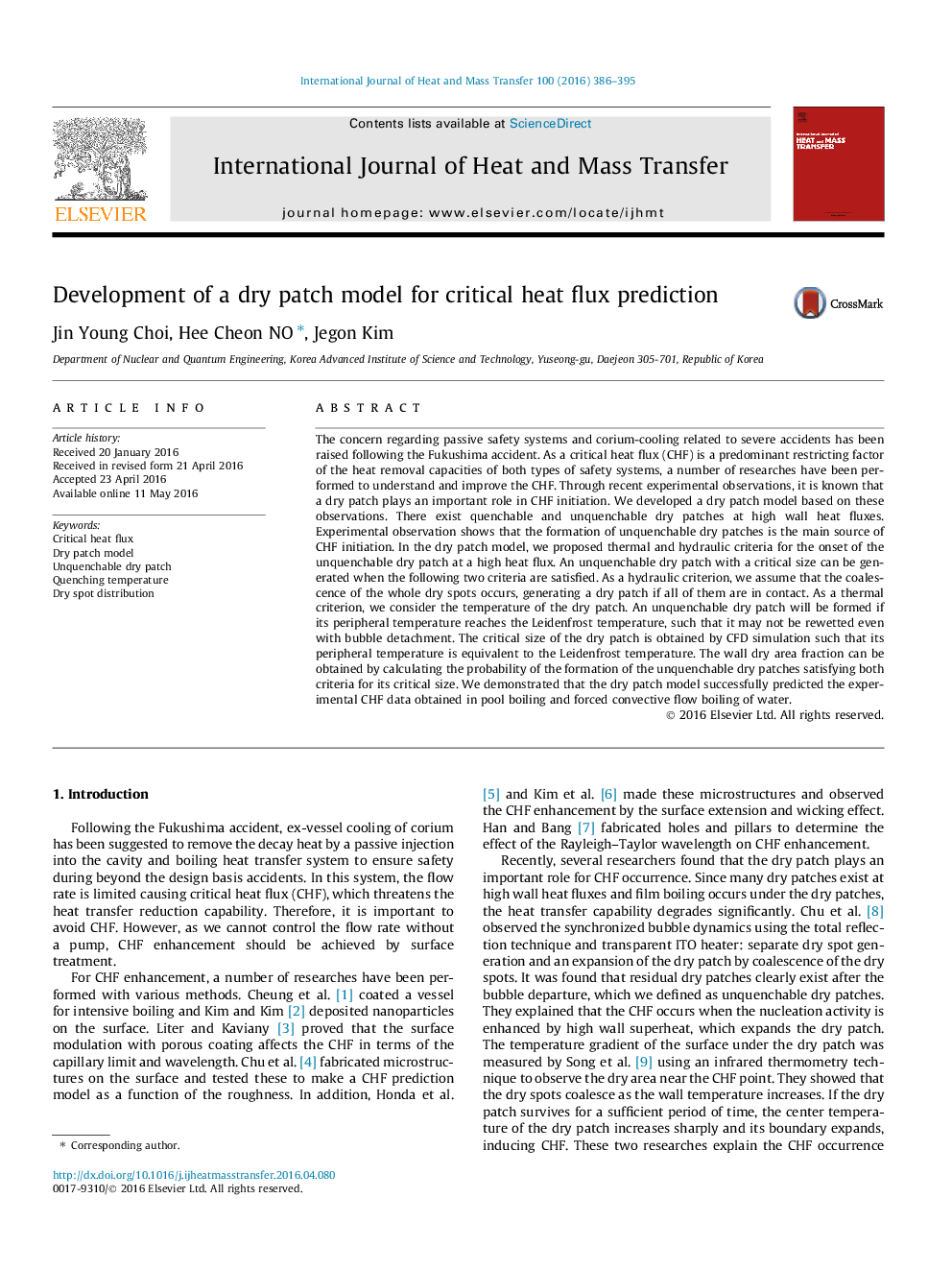| کد مقاله | کد نشریه | سال انتشار | مقاله انگلیسی | نسخه تمام متن |
|---|---|---|---|---|
| 656368 | 1458042 | 2016 | 10 صفحه PDF | دانلود رایگان |
• Unquenchable dry patch initiates critical heat flux.
• Dry patch model treats thermal and hydraulic conditions of unquenchable dry patch.
• Peripheral temperature of unquenchable dry patch has to exceed quenching temperature.
• Unquenchable dry patch should have critical number of dry spots.
• Dry patch model is an observation-based model applicable for CHF prediction.
The concern regarding passive safety systems and corium-cooling related to severe accidents has been raised following the Fukushima accident. As a critical heat flux (CHF) is a predominant restricting factor of the heat removal capacities of both types of safety systems, a number of researches have been performed to understand and improve the CHF. Through recent experimental observations, it is known that a dry patch plays an important role in CHF initiation. We developed a dry patch model based on these observations. There exist quenchable and unquenchable dry patches at high wall heat fluxes. Experimental observation shows that the formation of unquenchable dry patches is the main source of CHF initiation. In the dry patch model, we proposed thermal and hydraulic criteria for the onset of the unquenchable dry patch at a high heat flux. An unquenchable dry patch with a critical size can be generated when the following two criteria are satisfied. As a hydraulic criterion, we assume that the coalescence of the whole dry spots occurs, generating a dry patch if all of them are in contact. As a thermal criterion, we consider the temperature of the dry patch. An unquenchable dry patch will be formed if its peripheral temperature reaches the Leidenfrost temperature, such that it may not be rewetted even with bubble detachment. The critical size of the dry patch is obtained by CFD simulation such that its peripheral temperature is equivalent to the Leidenfrost temperature. The wall dry area fraction can be obtained by calculating the probability of the formation of the unquenchable dry patches satisfying both criteria for its critical size. We demonstrated that the dry patch model successfully predicted the experimental CHF data obtained in pool boiling and forced convective flow boiling of water.
Journal: International Journal of Heat and Mass Transfer - Volume 100, September 2016, Pages 386–395
